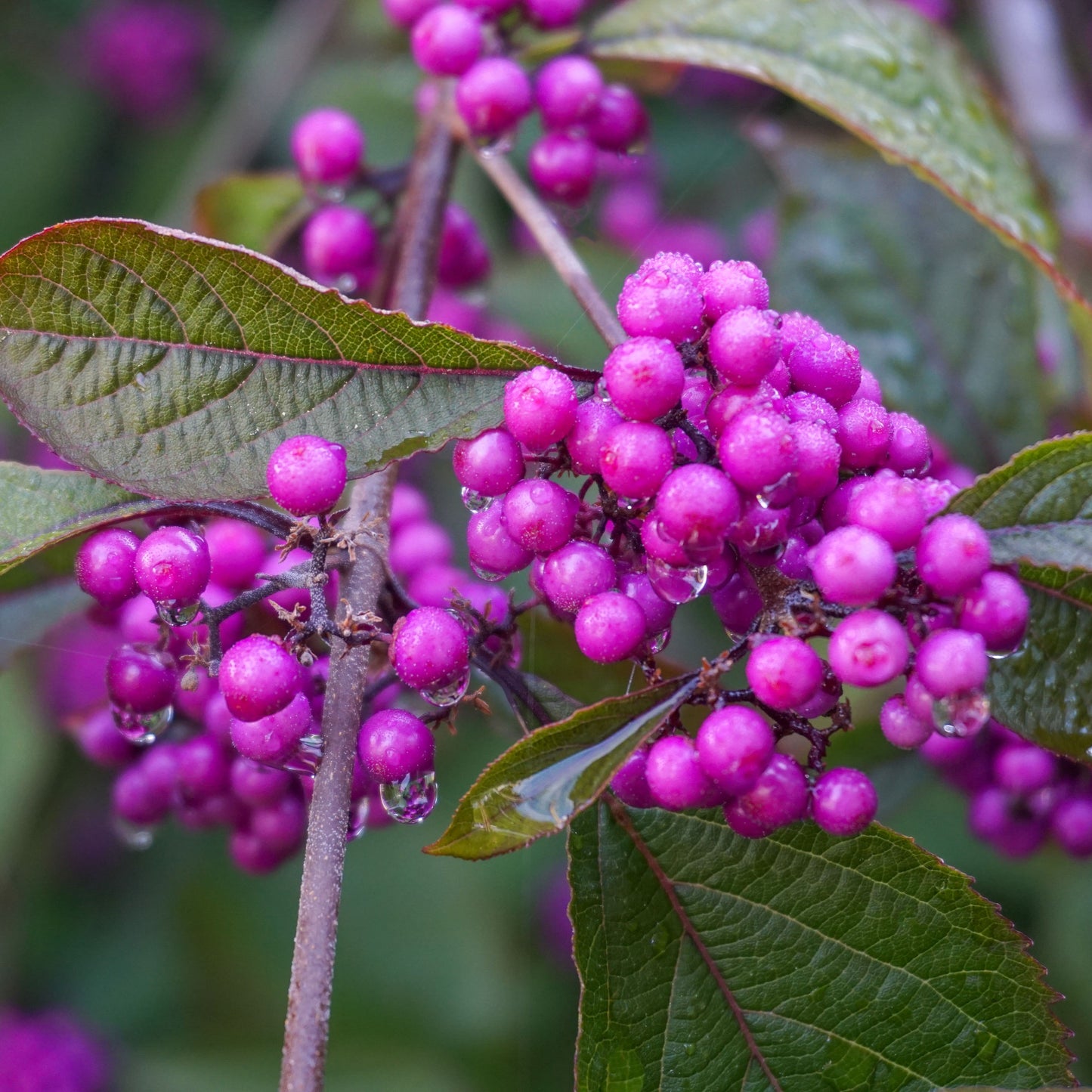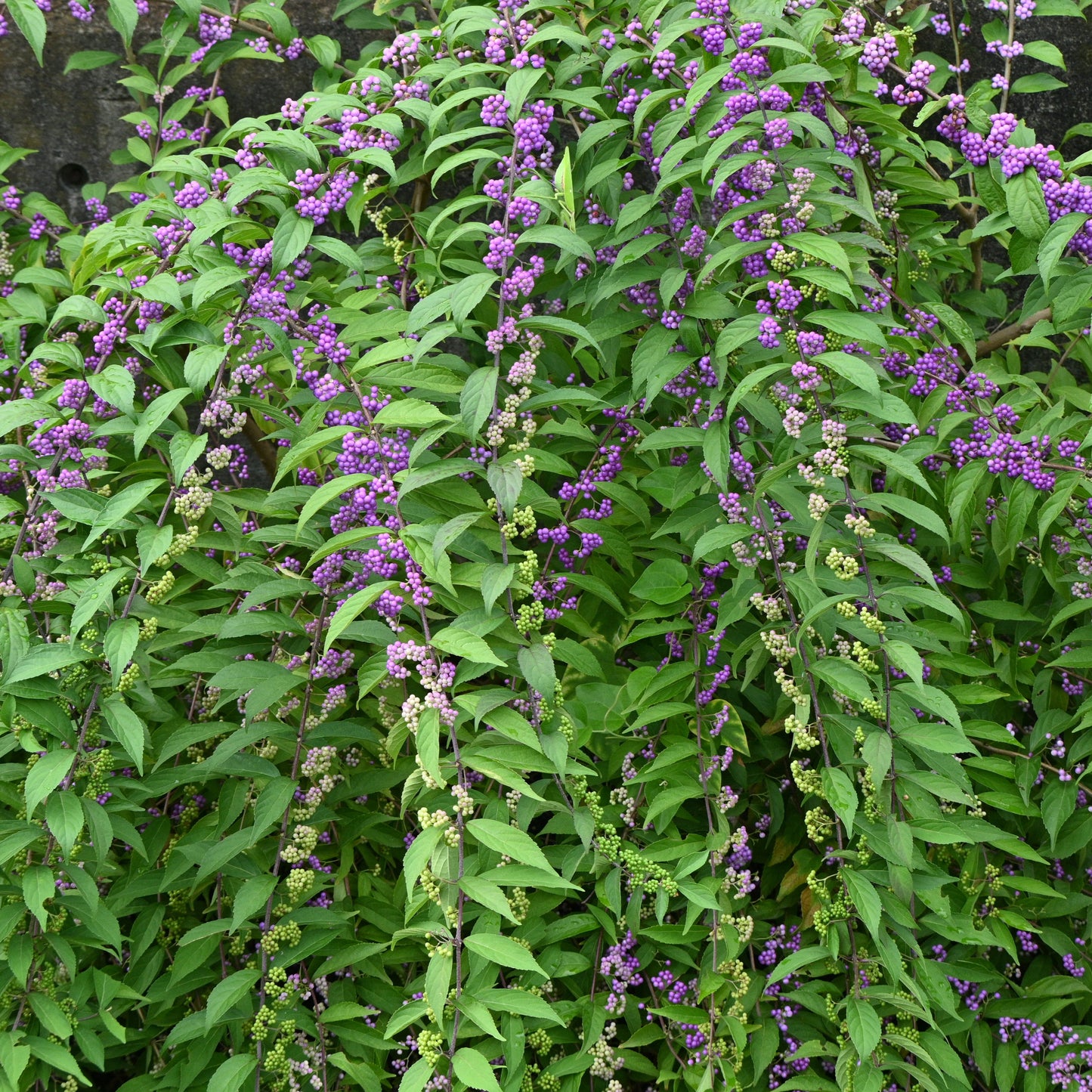Limited Quantities - Reserve Now For Fall
Japanese Beautyberry Shrub
Japanese Beautyberry Shrub
Couldn't load pickup availability
Callicarpa japonica
The Japanese Beautyberry is a striking ornamental shrub known for its vibrant purple berries that appear in late summer and persist into winter. This low-maintenance, deciduous shrub adds year-round interest to any landscape with its delicate pink flowers, lush green foliage, and unique berry clusters. Its ability to attract pollinators and wildlife makes it a valuable addition to gardens and naturalized areas.
Below is a detailed breakdown of its characteristics, care needs, and landscaping benefits.
Japanese Beautyberry Bush Overview
| Attribute | Details |
|---|---|
| Botanical Name | Callicarpa japonica |
| Common Names | Japanese Beautyberry |
| Mature Height | 4-6 feet |
| Mature Width | 4-6 feet |
| Growth Rate | Medium (1-2 feet per year) |
| Lifespan | 10-15 years |
| USDA Hardiness Zones | 5-8 |
| Sun Preference | Full sun to partial shade |
| Soil Type | Well-drained, loamy, sandy, or clay soils |
| Soil pH | Slightly acidic to neutral (5.5-7.5) |
| Water Needs | Moderate; prefers moist, well-drained soil but tolerates short dry periods |
| Flowering Season | Late spring to early summer |
| Flower Color | Small, pale pink to lavender blooms |
| Fruit | Bright purple berry clusters (late summer to winter) |
| Fall Foliage | Yellow, with some reddish hues |
| Wildlife Attraction | Birds, bees, and butterflies |
| Landscape Uses | Borders, hedges, wildlife gardens, mass plantings, woodland edges |
| Maintenance Level | Low |
Key Features & Benefits
✅ Spectacular Purple Berries – The small, clustered berries create an eye-catching display in late summer through winter.
✅ Wildlife-Friendly – Attracts pollinators with its flowers and provides food for birds in colder months.
✅ Drought-Tolerant Once Established – Requires minimal watering once mature.
✅ Compact & Adaptable – Works well in both formal and naturalized landscapes.
✅ Seasonal Interest – Soft pink flowers in summer, vibrant berries in fall, and golden foliage in autumn.
Pros & Cons
| Pros | Cons |
|---|---|
| Provides stunning fall and winter interest | Berries are not edible for humans |
| Tolerates a variety of soil conditions | Loses leaves in winter (deciduous) |
| Attracts pollinators and birds | May require pruning to maintain shape |
| Low-maintenance and drought-resistant | Needs protection from harsh frost in colder zones |
| Can be used in mass plantings, hedges, or as a specimen plant | Berries may drop and create slight mess in high-traffic areas |
Planting & Care Guide
- Spacing: Plant 3-6 feet apart for dense hedges or mass plantings
- Mulching: Apply a 2-3 inch layer of mulch to retain moisture and suppress weeds
- Pruning: Best pruned in late winter or early spring to remove dead branches and encourage fresh growth
- Fertilization: Light application of balanced fertilizer in spring to promote vigorous growth
The Japanese Beautyberry is an easy-to-grow, visually striking, and wildlife-friendly shrub that enhances landscapes with its unique berries and seasonal beauty. Whether planted in hedgerows, borders, or as a focal point, this shrub brings an elegant charm to gardens while supporting local ecosystems.
Share






